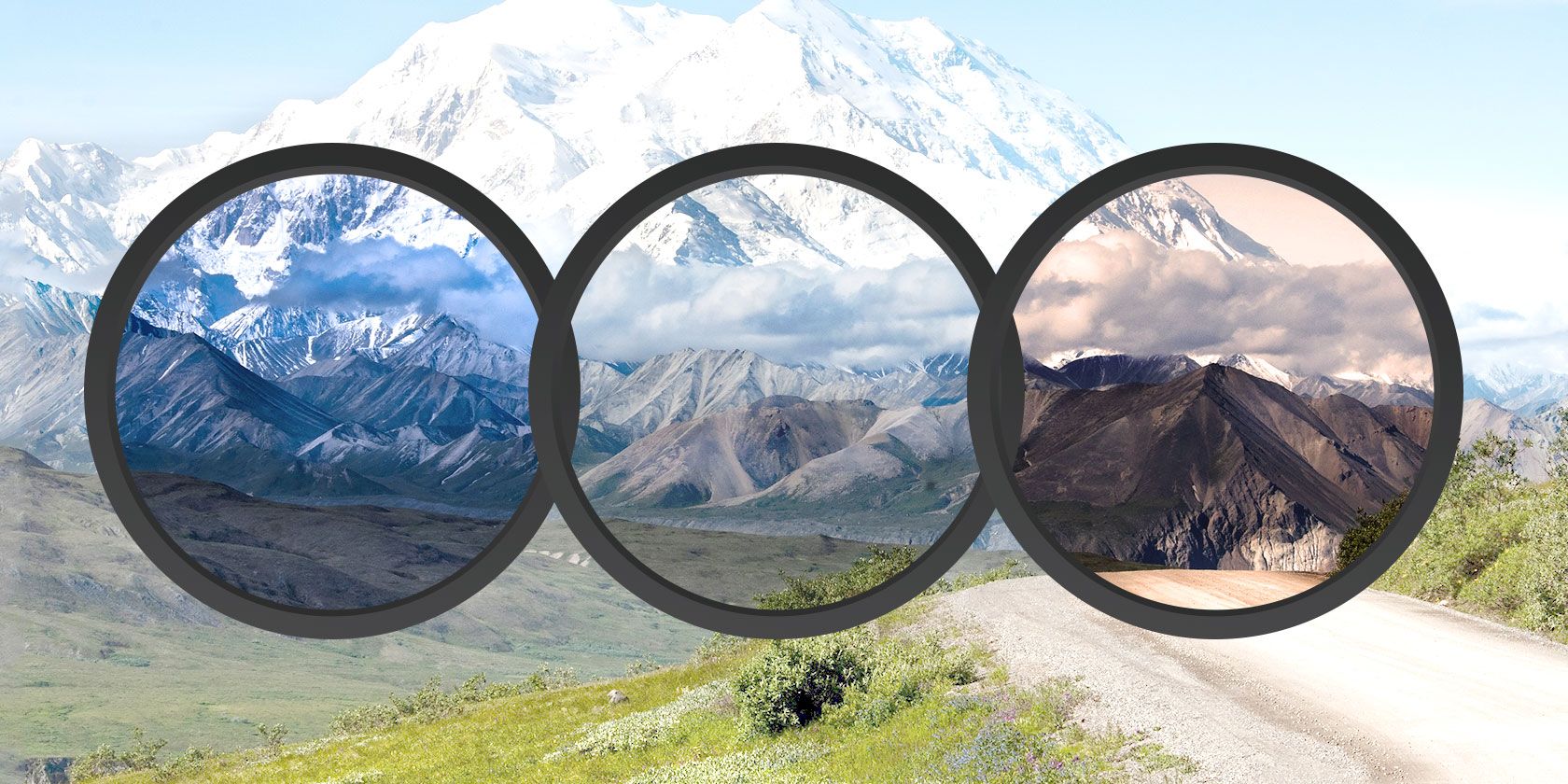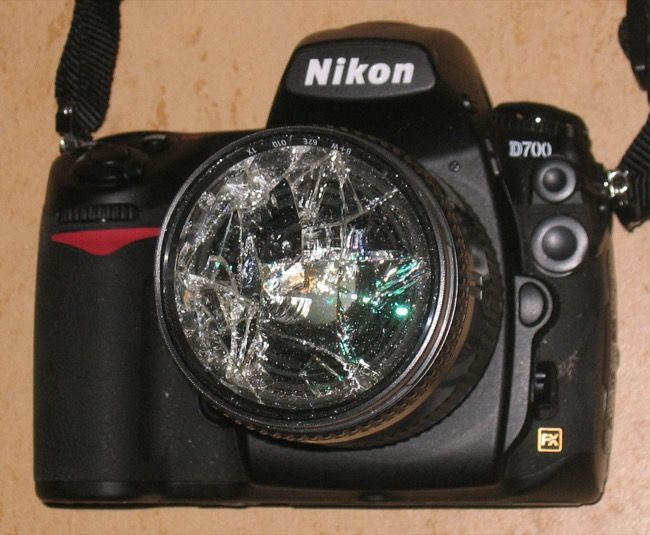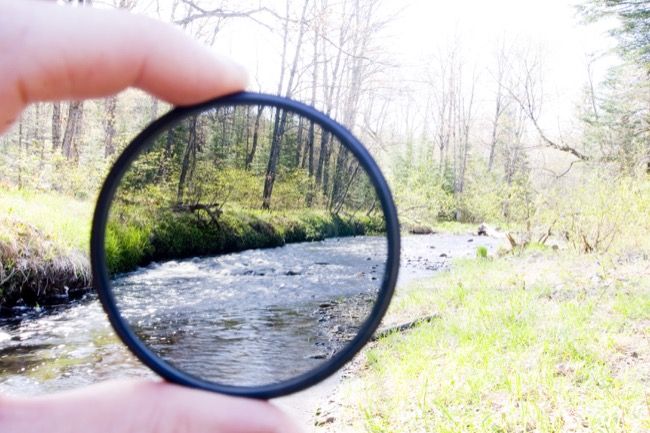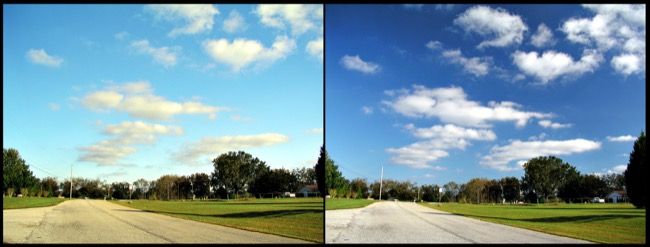The deeper you get into photography, the more gear you realize you might need. While it's possible to take great photos with just a basic camera, for certain kinds of shot you'll need special equipment.
Filters are one of the most important photographic accessories, especially for landscape photographers. They manipulate the light entering the camera so you don't always have to resort to techniques like exposure blending to get the shot. If you want to use protect your lenses, use slower shutter speeds, or limit certain kinds of undesirable light, you need to use a filter.
Ultraviolet Filters
Ultraviolet filters were initially designed to block out UV light on bright, sunny days. Some kinds of films (which I touched on in my intro to RAW images) have greater sensitivity to different parts of the light spectrum; this can extend into the ultraviolet range. If you shot images with one of those films out in daylight your images could end up with a blue color-cast.
Digital sensors, however, don't have this problem. They've got almost no UV sensitivity. Even still, some people like to use them for one reason: they provide an extra layer of protection for your lens.
UV filters only block UV light -- they don't block a noticeable amount of visible light from getting through so they won't affect how your images look (except in really unusual circumstances). This means you can leave one on your lens and if you drop or scratch it, the filter will be damaged before the actual lens elements.
How much protection you get is debatable, however, because they are quite cheap, I like to use them just in case. They also have the advantage of weather-sealing some lenses.
Neutral Density Filter
Neutral density filters block visible light. Depending on how strong the filter is, they can block anything from a third of a stop all the way up to ten stops of light.
Where neutral density filters come in handy is when you want to work with a slower shutter speed than the natural conditions allow. If you want to shoot a long exposure image in broad daylight then you need to use a neutral density filter to lower your shutter speed.
Neutral density filters are especially useful for videographers. The physics of camera shutters and digital video recording are complex but in most cases, videographers work with a shutter speed of either 1/24th of a second, 1/30th of a second, 1/50th of a second, or 1/60th of a second. All of these would be pretty slow shutter speeds for photography. If you want to shoot video on a sunny day and come away with cinema quality footage, you need to use ND filters. Most cinema cameras come with them built in.
There are two kinds of neutral density filters: solid and graduated. Solid ND filters have the same level of neutral density across the whole filter. Graduated filters have a gradient instead. These are designed for landscape photographers who want to expose for both the sky and land at once. By taking the sky down a stop or two, you can avoid blowing highlights in camera and come away with a better base image.
Polarizing Filter
Polarizing filters are one of the hardest to understand. They rely on some pretty complex physical properties of light. Rather than dive deep into a physics lesson, let's just focus on what a polarizing filter does to your photographs.
A polarizer prevents light of a certain polarization from entering the camera. Polarizing filters are used almost exclusively in landscape photography. The two main times you'll notice polarized light are when you are shooting a blue sky or a reflective non-metallic surface.
Bright skies have a high proportion of polarized light. As well as a graduated neutral density filter, one way to darken them is to use a polarizing filter. You don't get as much control over how much darker the sky gets but the advantage is you don't have to worry about lining a gradient up with the horizon. If you're shooting something in the far distance, they can also reduce atmospheric haze.
The most common situation when polarizing filters are used is when you're shooting a body of water or something made of glass. Unless you want reflections, they tend to detract from the final image. A polarizing filter significantly reduces them.
Filter Systems
When it comes to filters, you have two options for how you mount them to your lenses. The first is to use threaded round filters, the second is to use a filter mounting system. Each has advantages and disadvantages.
Threaded filters screw directly onto the front of your lens. Each lens has a filter diameter written somewhere on the barrel. A lens with a diameter of 77 mm will take a 77 mm round filter. Apart from graduated neutral density filters, you can get threaded versions of every kind of filter I've mentioned.
The advantage of threaded filters is that they tend to be cheap. They also mount more securely to your lenses. If you want to use a UV filter for protection, it needs to be a threaded one. The main disadvantage is that unless all your lenses are the same diameter (which is only the case with professional lenses) you'll need to get different filters for each one. There are step-down converters available but if the filter is smaller than the lens diameter, they don't work.
The other option is to invest in a filter system. While they are initially more expensive, you get a lot more flexibility. Most filter systems have a mount that attaches to the front of the camera. You then slot square or rectangular filters into the holder. With a filter system, you can normally stack multiple different filters -- for example, you can use a polarizer, graduated neutral density filter and regular neutral density filter at the same time.
If you're serious about landscape photography, a dedicated filter system is the way to go. If you're just looking to occasionally dabble in long exposure photography or protect your lenses, threaded filters are a better option.
Wrapping Up
Filters are one of the accessories that as you get more into photography you'll be more tempted to invest in. If you're just starting out you really don't need to worry. Work on developing your skills instead. When you're ready to explore more complex areas of photography, then it's time to invest in filters.
Image Credits: Sven Wolter via Wikimedia, Robert Emperley via Wikimedia, PiccoloNamek via Wikimedia




